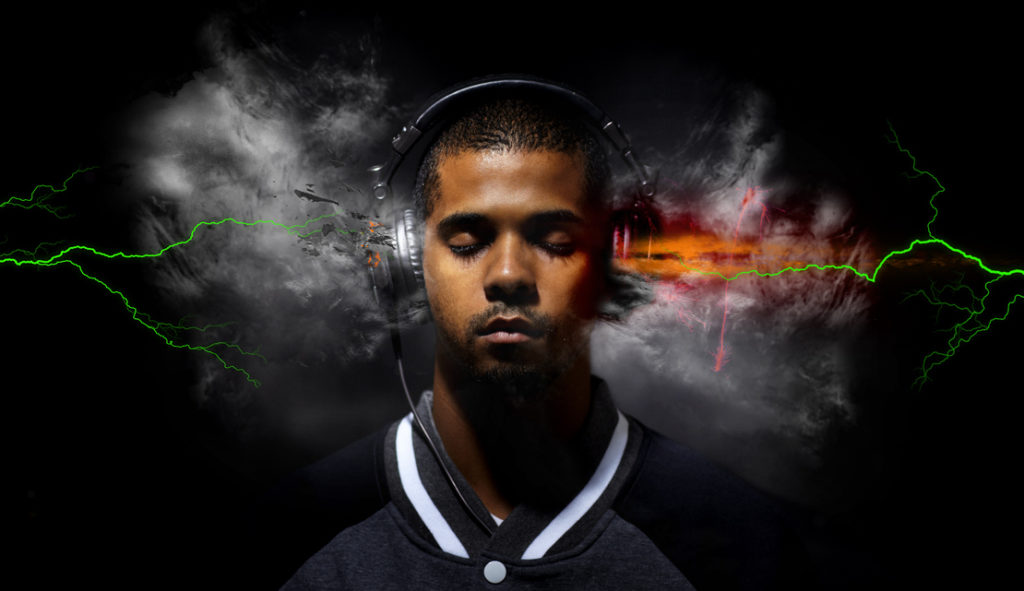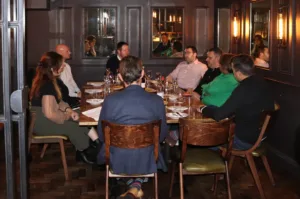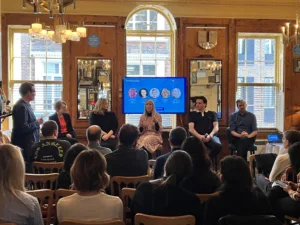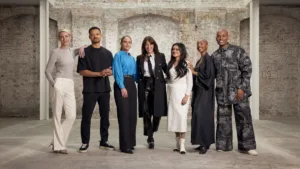Video may not have killed the radio star, but when it comes to advertising, brands often wonder how to stand out in an age of smart TVs, streaming and playlists. Happily, addressable audio allows advertisers to engage listeners with creative personalisation in a medium that is often a constant and reassuring presence in consumers’ lives.
In the first part of our roundtable, in partnership with AMA, our panel explores why addressable audio is at once a highly desirable new format, yet one that clients often struggle to get to grips with. Chaired by NDA Editor, Justin Pearse, the roundtable featured Silke Zetzsche, Commercial Director UK, EMEA & ROW, AMA, Richard Williams, Commercial Director, AMA, Thomas Balaam, Business Director, Mindshare, Rhys Williams, Tech and Activation Lead, The7stars, Vlad Kamisovs, Group Director, Partnerships, Matterkind, Scott Braniff, Head of Investment, Digital & Print, Wavemaker, Sam Austin, Head of Audio, Good Stuff, Esmeralda Lockhart, UK Head of Addressable Creative, Mediacom and Blake Moseley, Global Head of Product, Addressable, Hogarth Worldwide.
Esmeralda Lockhart, UK Head of Addressable Creative, Mediacom kicked off the conversation by calling addressable ads “a Renaissance period in audio advertising”. It is not, however, something that is reaching the mainstream – yet. Clients can still be hesitant and panellists acknowledged that economic conditions might be at play.
Scott Braniff, Head of Investment, Digital & Print, Wavemaker explained that the two need not be mutually exclusive: “The common theme for next year is how can I do more with less and prove my marketing is working? Addressability forms part of how we answer that.”
Sam Austin, Head of Audio, Good Stuff agreed: “Some clients just don’t have big budgets anymore. Clients using addressable are reaping the rewards. In 2023, as an industry, we’re going to have to do a really big education piece.”
Bringing clients along on this journey was a view echoed by Vlad Kamisovs, Group Director, Partnerships, Matterkind: “Prove our value to the client, challenge ideas or the status quo by offering new things – and be honest about whether or not they work.”
Certainly, addressable audio could be at a tipping point with Blake Moseley, Global Head of Product, Addressable, Hogarth Worldwide, referring to it as “the industry’s golden child”, while Thomas Balaam, Business Director, Mindshare stated he expected to be “inundated with audio briefs” in 2023.
That’s not to say panellists expect to sit back and just watch addressable orders flood in. There is a lot of groundwork to be done before clients are comfortable with this as a fully-fledged channel, as Richard Williams, Commercial Director, AMA, explained. “We’re in a reactive market at the moment and brands are nervous about where they’re spending. We should be at the start of the process, talking to the creative agency and building the campaign ourselves.”
Balaam agreed: “I don’t want to make radio hard for people to do because they’ll walk away from it. Creative needs to be fought for at the beginning of the campaign.” This process begins with. The acknowledgement that addressable audio is a new format with different creative and project demands.
Lockhart warns: “We have to break the legacy behaviour of how clients brief campaigns when you have the creative agency briefed for one thing and the media agency briefed for another. Because of that siloed briefing there’s a disconnect. They are still thinking that there are 50,000 versions of an audio ad.”
Succeeding in this medium also means reviewing some accepted practices and perhaps finally admitting that cherished strategies aren’t as successful as we make out. Rhys Williams, Tech and Activation Lead, The7stars, reveals: “You’ve got to leave some of the personalisation bad habits from digital and cookies behind. I think we’re in the habit of repeating those mistakes, like dynamic creative which has never really taken off. Identifying clients that are prepared to take some risks, and then link it to their product so it’s much more joined up.”
Silke Zetzsche, Commercial Director UK, EMEA & ROW, AMA, reflects on how meal kit delivery service, Gousto, has managed to make addressable ads a seamless part of its overall communications strategy using addressable audio. It all hinges on the typical householder behaviour of popping the radio on while prepping supper. “Gousto has created a 3D formula for planning. Taking that insight of a moment in people’s lives and hooking it to the music. It was another layer to the planning cycle, not just audience and data but moment and how they’re experiencing it,” she explains.
Addressable audio will take time to gain full traction, with panellists noting that, while it enjoys the reach of broadcast audio, it is equally as difficult to measure and therefore client expectations may need careful management in the early days. But, addressable audio is already making waves.
In Part 2 of this exclusive round-up from the roundtable, we’ll reveal where the strategy has really held its own, and what that means for its future potential.









